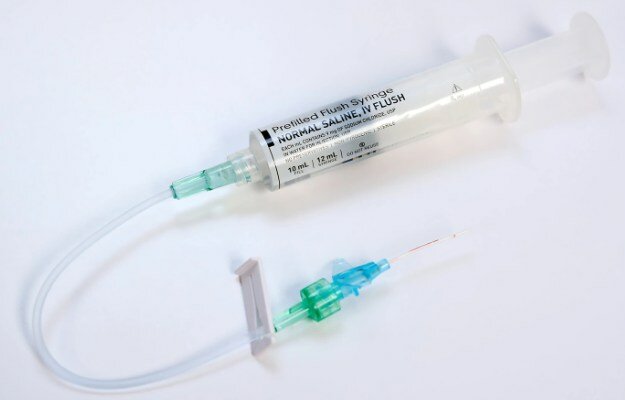New AI-Driven Tool Mines COVID-19 Research for New Treatments and Vaccine
|
By HospiMedica International staff writers Posted on 22 May 2020 |

Image: New AI-driven Tool Mines COVID-19 Research for New Treatments and Vaccine (Photo courtesy of SAS)
A free visual text analysis environment uses artificial intelligence (AI) and machine learning to quickly search tens of thousands of research articles on COVID-19 and deliver potentially lifesaving answers to scientists working for new treatments and vaccine.
The COVID-19 Scientific Literature Search and Text Analysis has been developed by analytics company, SAS (Cary, NC, USA). Leading research groups have gathered and released to the public more than 50,000 full-text scientific research articles on COVID-19 and other coronaviruses through the COVID-19 Open Research Dataset (CORD-19). The articles include studies on treatment effectiveness, vaccine development, mitigation efforts, genetic analysis, economic impact and more. With so much scientific literature available, it's impractical – if not impossible – to analyze it all manually.
Drawing on AI, natural language processing, linguistic rules and sophisticated modeling techniques, SAS' COVID-19 Scientific Literature Search and Text Analysis environment enables quick and intelligent extraction of relevant text and numerical data from CORD-19. The free and publicly available environment aims to quickly and efficiently connect the global research community with the most relevant scientific literature through its self-guided, cloud-based system. With SAS' new visual text analysis environment, users can interactively explore relevant research on coronavirus topics such as incubation period, genetic variations, risk assessment and more. They can also visualize extracted keywords and summarized quantitative data, quickly identify co-citations and the authority of papers using network analysis visualization, and search for key terms in free text.
SAS Viya powers the interactive environment through advanced analytics and AI methods that help researchers explore the CORD-19 dataset. Using SAS Visual Text Analytics and SAS Visual Data Mining and Machine Learning, SAS augments the dataset with models developed by linguists and health and life sciences experts. Researchers can explore topics such as PPE effectiveness, social distancing efficacy and the transmission environment. The models also extract and visualize quantitative data, such as the incubation period and reproduction number of COVID-19.
As part of its COVID-19 response, SAS has also released the COVID-19 Epidemiological Scenario Analysis, an interactive environment that builds on medical resource optimization models. These models run different virus-projection scenarios to predict the impact of a disease outbreak and quantify the effectiveness of public health mitigation strategies. Additionally, SAS' dedicated COVID-19 Data Analytics Resources Hub includes free analytical models, a public dashboard to monitor the spread of the pandemic, a data-discovery environment built on SAS Viya, and access to free training.
"SAS is committed to using advanced technology in innovative ways to help customers across every industry combat the pandemic," said Bryan Harris, Senior Vice President of Engineering at SAS. "Our new AI-powered environment goes beyond current offerings in the market and provides an intuitive, visual way to find complex connections in research. Because we're not only relying on machine learning, but also human-in-the-loop approaches, users can view different data slices to find exactly what they need to support their own research needs."
Related Links:
SAS
The COVID-19 Scientific Literature Search and Text Analysis has been developed by analytics company, SAS (Cary, NC, USA). Leading research groups have gathered and released to the public more than 50,000 full-text scientific research articles on COVID-19 and other coronaviruses through the COVID-19 Open Research Dataset (CORD-19). The articles include studies on treatment effectiveness, vaccine development, mitigation efforts, genetic analysis, economic impact and more. With so much scientific literature available, it's impractical – if not impossible – to analyze it all manually.
Drawing on AI, natural language processing, linguistic rules and sophisticated modeling techniques, SAS' COVID-19 Scientific Literature Search and Text Analysis environment enables quick and intelligent extraction of relevant text and numerical data from CORD-19. The free and publicly available environment aims to quickly and efficiently connect the global research community with the most relevant scientific literature through its self-guided, cloud-based system. With SAS' new visual text analysis environment, users can interactively explore relevant research on coronavirus topics such as incubation period, genetic variations, risk assessment and more. They can also visualize extracted keywords and summarized quantitative data, quickly identify co-citations and the authority of papers using network analysis visualization, and search for key terms in free text.
SAS Viya powers the interactive environment through advanced analytics and AI methods that help researchers explore the CORD-19 dataset. Using SAS Visual Text Analytics and SAS Visual Data Mining and Machine Learning, SAS augments the dataset with models developed by linguists and health and life sciences experts. Researchers can explore topics such as PPE effectiveness, social distancing efficacy and the transmission environment. The models also extract and visualize quantitative data, such as the incubation period and reproduction number of COVID-19.
As part of its COVID-19 response, SAS has also released the COVID-19 Epidemiological Scenario Analysis, an interactive environment that builds on medical resource optimization models. These models run different virus-projection scenarios to predict the impact of a disease outbreak and quantify the effectiveness of public health mitigation strategies. Additionally, SAS' dedicated COVID-19 Data Analytics Resources Hub includes free analytical models, a public dashboard to monitor the spread of the pandemic, a data-discovery environment built on SAS Viya, and access to free training.
"SAS is committed to using advanced technology in innovative ways to help customers across every industry combat the pandemic," said Bryan Harris, Senior Vice President of Engineering at SAS. "Our new AI-powered environment goes beyond current offerings in the market and provides an intuitive, visual way to find complex connections in research. Because we're not only relying on machine learning, but also human-in-the-loop approaches, users can view different data slices to find exactly what they need to support their own research needs."
Related Links:
SAS
Latest COVID-19 News
- Low-Cost System Detects SARS-CoV-2 Virus in Hospital Air Using High-Tech Bubbles
- World's First Inhalable COVID-19 Vaccine Approved in China
- COVID-19 Vaccine Patch Fights SARS-CoV-2 Variants Better than Needles
- Blood Viscosity Testing Can Predict Risk of Death in Hospitalized COVID-19 Patients
- ‘Covid Computer’ Uses AI to Detect COVID-19 from Chest CT Scans
- MRI Lung-Imaging Technique Shows Cause of Long-COVID Symptoms
- Chest CT Scans of COVID-19 Patients Could Help Distinguish Between SARS-CoV-2 Variants
- Specialized MRI Detects Lung Abnormalities in Non-Hospitalized Long COVID Patients
- AI Algorithm Identifies Hospitalized Patients at Highest Risk of Dying From COVID-19
- Sweat Sensor Detects Key Biomarkers That Provide Early Warning of COVID-19 and Flu
- Study Assesses Impact of COVID-19 on Ventilation/Perfusion Scintigraphy
- CT Imaging Study Finds Vaccination Reduces Risk of COVID-19 Associated Pulmonary Embolism
- Third Day in Hospital a ‘Tipping Point’ in Severity of COVID-19 Pneumonia
- Longer Interval Between COVID-19 Vaccines Generates Up to Nine Times as Many Antibodies
- AI Model for Monitoring COVID-19 Predicts Mortality Within First 30 Days of Admission
- AI Predicts COVID Prognosis at Near-Expert Level Based Off CT Scans
Channels
Critical Care
view channel
Light-Based Technology to Measure Brain Blood Flow Could Diagnose Stroke and TBI
Monitoring blood flow in the brain is crucial for diagnosing and treating neurological conditions such as stroke, traumatic brain injury (TBI), and vascular dementia. However, current imaging methods like... Read more
AI Heart Attack Risk Assessment Tool Outperforms Existing Methods
For decades, doctors have relied on standardized scoring systems to assess patients with the most common type of heart attack—non-ST-elevation acute coronary syndrome (NSTE-ACS). The GRACE score, used... Read moreSurgical Techniques
view channel
Minimally Invasive Endoscopic Surgery Improves Severe Stroke Outcomes
Intracerebral hemorrhage, a type of stroke caused by bleeding deep within the brain, remains one of the most challenging neurological emergencies to treat. Accounting for about 15% of all strokes, it carries... Read more
Novel Glue Prevents Complications After Breast Cancer Surgery
Seroma and prolonged lymphorrhea are among the most common complications following axillary lymphadenectomy in breast cancer patients. These postoperative issues can delay recovery and postpone the start... Read morePatient Care
view channel
Revolutionary Automatic IV-Line Flushing Device to Enhance Infusion Care
More than 80% of in-hospital patients receive intravenous (IV) therapy. Every dose of IV medicine delivered in a small volume (<250 mL) infusion bag should be followed by subsequent flushing to ensure... Read more
VR Training Tool Combats Contamination of Portable Medical Equipment
Healthcare-associated infections (HAIs) impact one in every 31 patients, cause nearly 100,000 deaths each year, and cost USD 28.4 billion in direct medical expenses. Notably, up to 75% of these infections... Read more
Portable Biosensor Platform to Reduce Hospital-Acquired Infections
Approximately 4 million patients in the European Union acquire healthcare-associated infections (HAIs) or nosocomial infections each year, with around 37,000 deaths directly resulting from these infections,... Read moreFirst-Of-Its-Kind Portable Germicidal Light Technology Disinfects High-Touch Clinical Surfaces in Seconds
Reducing healthcare-acquired infections (HAIs) remains a pressing issue within global healthcare systems. In the United States alone, 1.7 million patients contract HAIs annually, leading to approximately... Read moreHealth IT
view channel
Printable Molecule-Selective Nanoparticles Enable Mass Production of Wearable Biosensors
The future of medicine is likely to focus on the personalization of healthcare—understanding exactly what an individual requires and delivering the appropriate combination of nutrients, metabolites, and... Read moreBusiness
view channel
Philips and Masimo Partner to Advance Patient Monitoring Measurement Technologies
Royal Philips (Amsterdam, Netherlands) and Masimo (Irvine, California, USA) have renewed their multi-year strategic collaboration, combining Philips’ expertise in patient monitoring with Masimo’s noninvasive... Read more
B. Braun Acquires Digital Microsurgery Company True Digital Surgery
The high-end microsurgery market in neurosurgery, spine, and ENT is undergoing a significant transformation. Traditional analog microscopes are giving way to digital exoscopes, which provide improved visualization,... Read more
CMEF 2025 to Promote Holistic and High-Quality Development of Medical and Health Industry
The 92nd China International Medical Equipment Fair (CMEF 2025) Autumn Exhibition is scheduled to be held from September 26 to 29 at the China Import and Export Fair Complex (Canton Fair Complex) in Guangzhou.... Read more
















